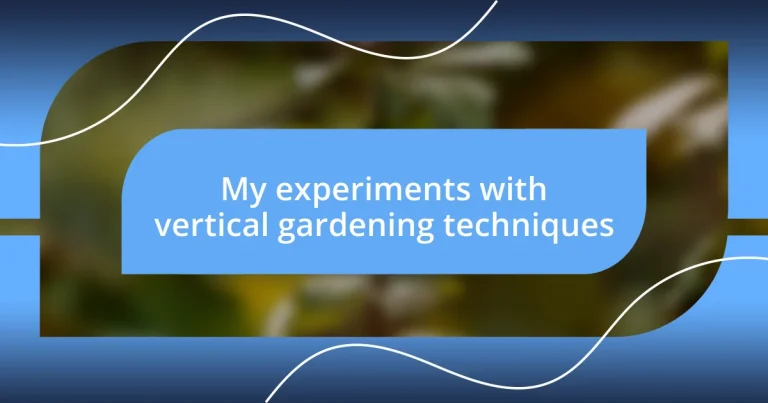Key takeaways:
- Vertical gardening effectively utilizes limited space, enhancing both aesthetics and sustainability in urban environments.
- Essential tools like trellises and vertical planters simplify maintenance and improve the gardening experience.
- Common challenges include proper plant selection, sunlight management, and water distribution, which require careful planning and attention.
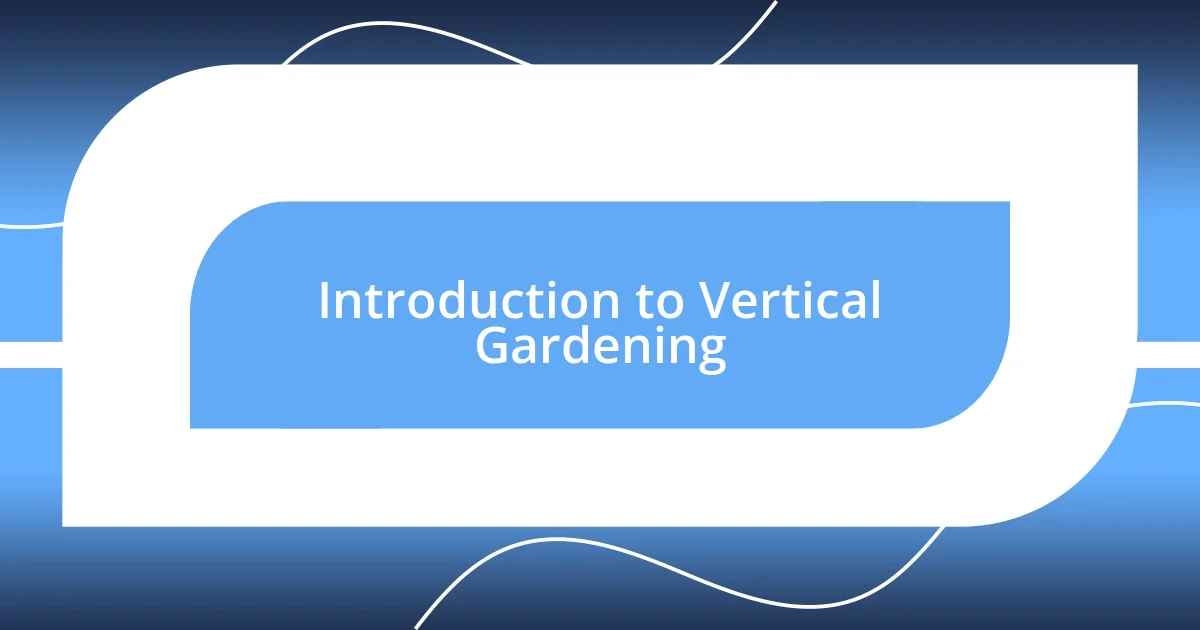
Introduction to Vertical Gardening
Vertical gardening is a creative and innovative way to make the most of limited space while bringing greenery into urban environments. I remember the first time I was captivated by a vertical garden—it was at a small café downtown. The lush greenery cascading from the wall made the place feel alive, and I wondered, could I recreate that at home?
This gardening technique involves growing plants upward rather than outward, making it perfect for balconies, small yards, or even indoor spaces. I was hesitant initially, thinking about the maintenance and the right plants to choose, but the thought of turning an empty wall into a lush display motivated me to dive in.
I’ve discovered that vertical gardening isn’t just about aesthetics; it’s also about sustainability and enhancing living spaces. Have you ever felt the satisfaction of picking fresh herbs right from your wall? There’s something truly special about it, and I feel a sense of accomplishment every time I use those home-grown ingredients in my meals. It’s an experience I think everyone should try!
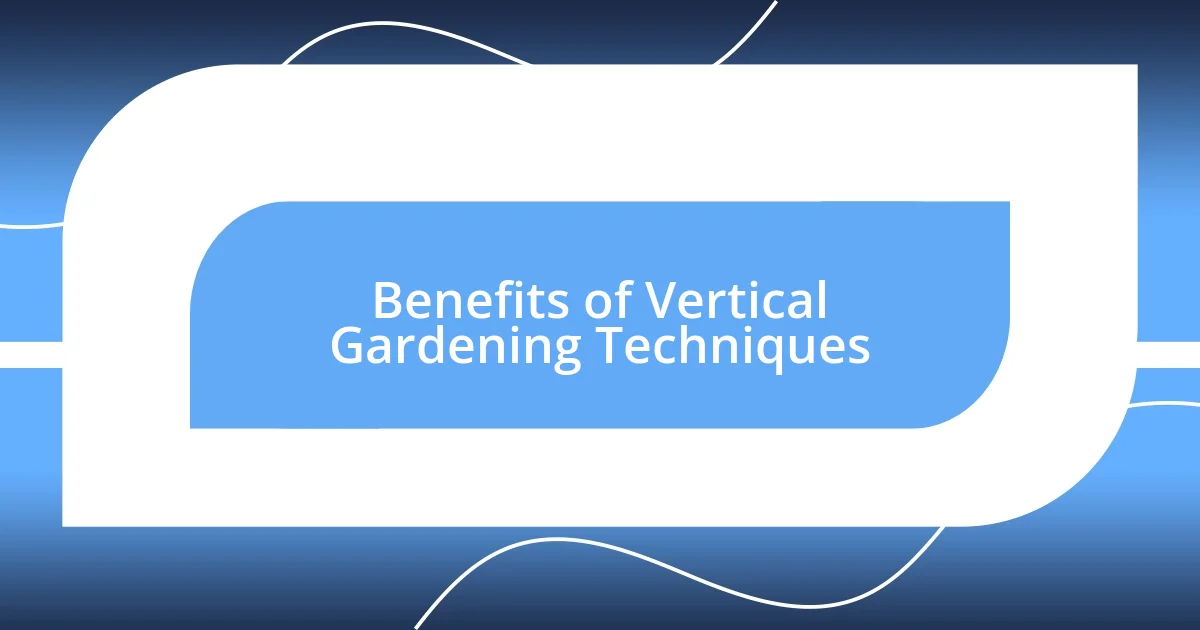
Benefits of Vertical Gardening Techniques
Vertical gardening opens up a world of benefits that extend far beyond mere aesthetics. One of the greatest advantages I found is how it maximizes space. In my tiny apartment, traditional gardening felt impossible, but when I set up my first vertical garden, it transformed a dull wall into a flourishing green oasis. The excitement of utilizing vertical space has made gardening more achievable, even in the most confined areas.
Furthermore, vertical gardens contribute positively to air quality. I recall a warm afternoon spent in my living room, surrounded by fresh herbs and vibrant plants. The air felt different—crisp and invigorating. Plants naturally filter toxins and can even reduce noise pollution. It’s not just about growing food; it’s about creating a serene environment that improves my well-being.
Another remarkable benefit I encountered with vertical gardening is the ease of maintenance. Watering and caring for plants become more accessible when they’re arranged vertically. I learned that many plants thrive in vertical settings, overcoming the challenges of pests and disease. Every time I effortlessly harvest a ripe tomato or pinch off some fragrant basil for dinner, I’m reminded of how rewarding and practical these techniques can be.
| Benefit | Description |
|---|---|
| Space Efficiency | Utilizes vertical space, making gardening possible in small areas. |
| Improved Air Quality | Plants purify the air and create a healthier living environment. |
| Easy Maintenance | Vertical arrangements simplify watering and care for plants. |
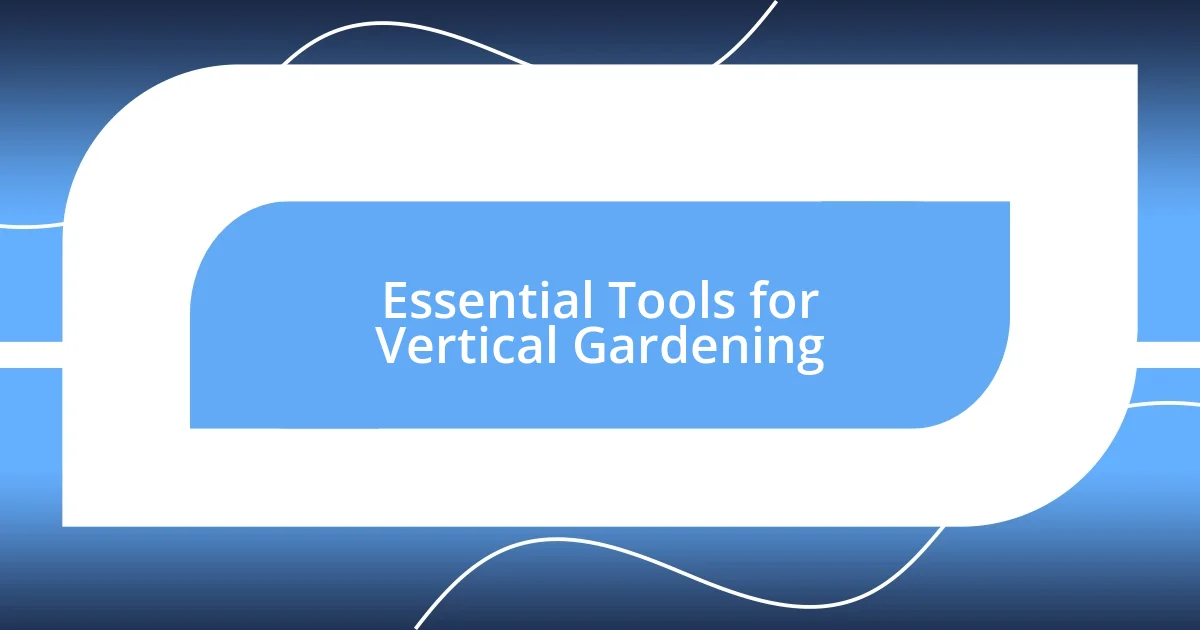
Essential Tools for Vertical Gardening
To dive into the world of vertical gardening, having the right tools makes all the difference. I’ve had my fair share of experimentation, and I found that investing in a few essential tools not only enhanced my gardening experience but also made the process so much more enjoyable. For instance, a sturdy trellis not only supports climbing plants but also adds an artistic touch to my garden. It’s fascinating how the right equipment can elevate the garden’s aesthetic while being functional.
Here’s a list of essential tools that I recommend for any aspiring vertical gardener:
- Trellis: Supports climbing plants and enhances visual appeal.
- Vertical Planters: These containers maximize space and help manage drainage.
- Watering Can with Long Spout: Allows for easy access to plants without disturbing other greenery.
- Gardening Gloves: Protect your hands while you cultivate and maintain your garden.
- Pruning Shears: Essential for maintaining healthy plants and encouraging growth.
While it may seem like a small detail, having these tools on hand made my gardening sessions more enjoyable. I remember the first time I pruned my plants; it felt like nurturing a friend. Each snip made them look more vibrant and encouraged new growth. You’ll find that the right tools can inspire creativity and foster a deeper connection with your green spaces.
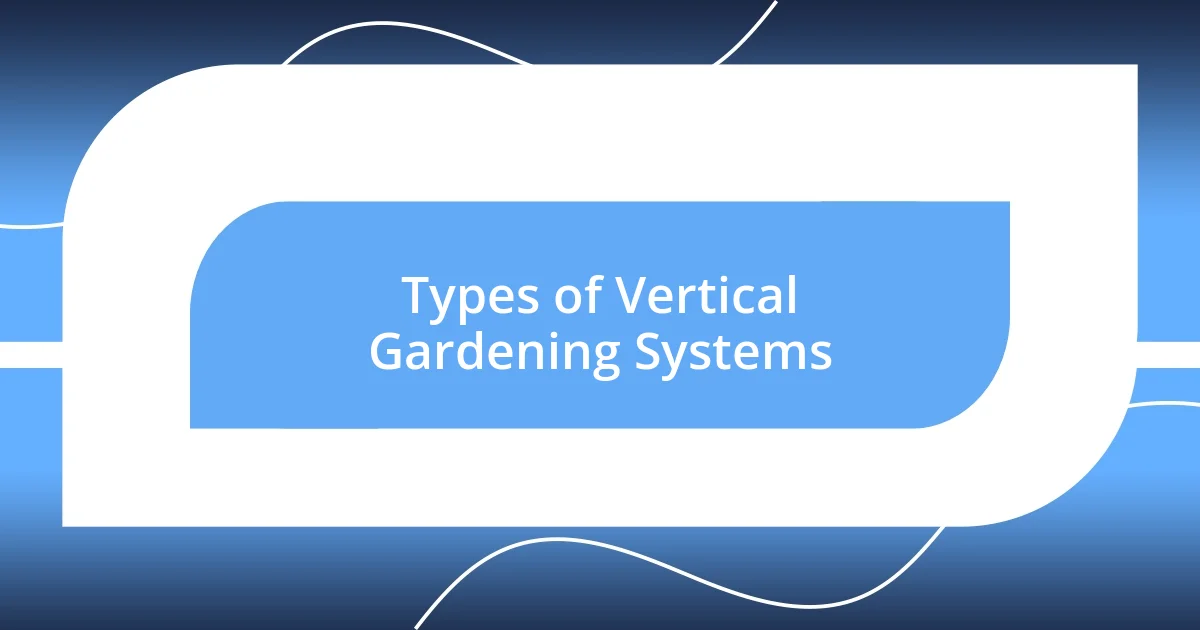
Types of Vertical Gardening Systems
When exploring vertical gardening systems, you’ll encounter several distinctive designs, each fulfilling unique needs. One system I tried is the hanging wall planter, which transformed my bare balcony wall into a living tapestry of herbs and succulents. I remember hanging it up and being amazed at how something so simple could completely change the feel of the space. Have you considered how vertical layers can add so much character to a dull area?
Another system that caught my attention is the pallet garden, a fantastic way to repurpose old wood while creating a distinctive vertical display. I collected several pallets, layered them, and filled them with a variety of flowers and edible plants. The sense of satisfaction I felt when my friends complimented my DIY project was immense. It made me realize that even recycled materials can thrive when given a chance—what a sustainable approach to gardening, right?
For my indoor space, I opted for freestanding shelving units designed specifically for plants. This option made it easy to move the setup around until I found the perfect spot for sunlight exposure. As I watched my plants grow taller, I experienced a sense of achievement that was hard to describe. The vibrant color of the leaves against the backdrop of my living room gave me an unexpected boost of joy every day. These systems really make you reevaluate how you view and interact with your indoor environment!
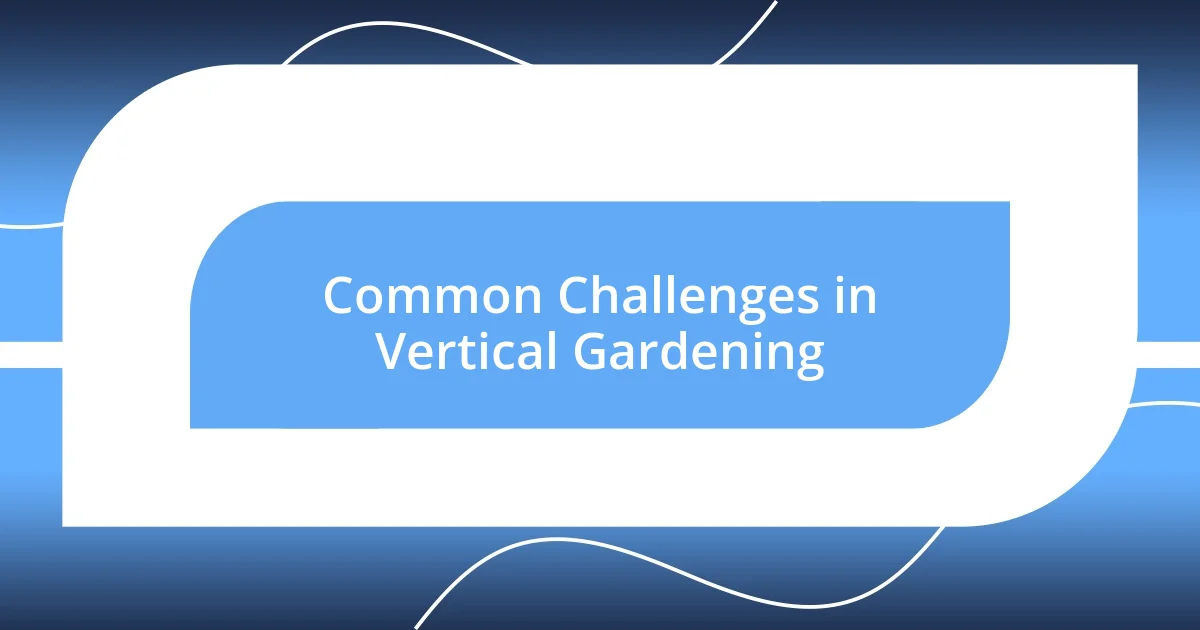
Common Challenges in Vertical Gardening
When I first delved into vertical gardening, I was unprepared for the issue of plant selection. Not all plants thrive when grown vertically, and I quickly learned that careful consideration is essential. I remember feeling disheartened when the climbing vine I had chosen just didn’t take off as I expected. It triggered a thought: have you considered how the wrong plant can change your entire gardening experience?
Another challenge I faced was ensuring adequate sunlight for my plants. The configuration of vertical structures can complicate light distribution. I fondly recall a summer where my herbs flourished on the top tier but languished below. The struggle of balancing sunlight and shadow was both frustrating and enlightening. It prompted me to ask: how do you maximize growth in limited light conditions?
Water management is also a significant concern. When the plants are stacked vertically, ensuring even moisture can be tricky. I once overwatered one section, and the cascading effects were evident. Rusty roots and droopy leaves felt like a personal defeat. Have you ever experienced the heartache of losing a plant to simple miscalculations? With so much to manage, I learned that a consistent watering schedule and good drainage are key to having a thriving vertical garden.












